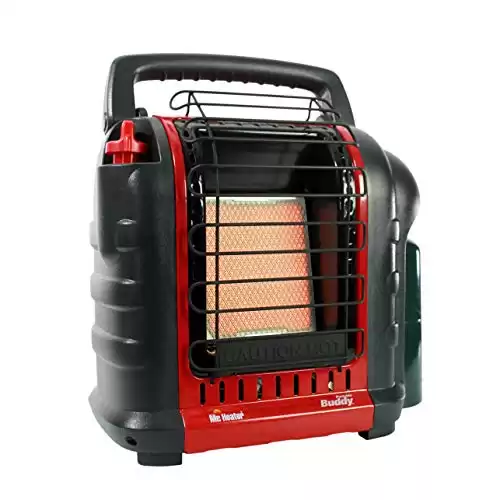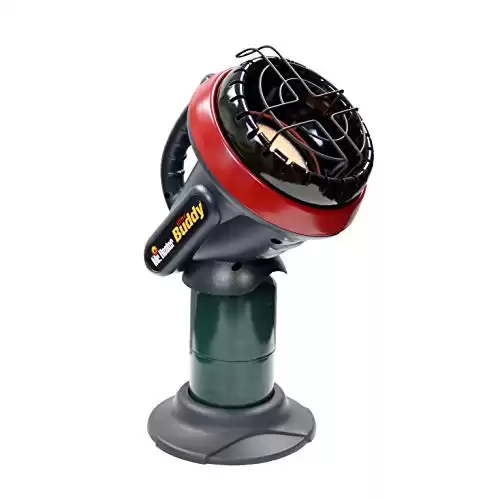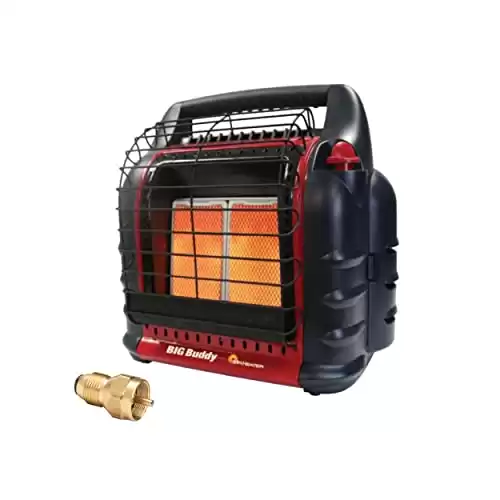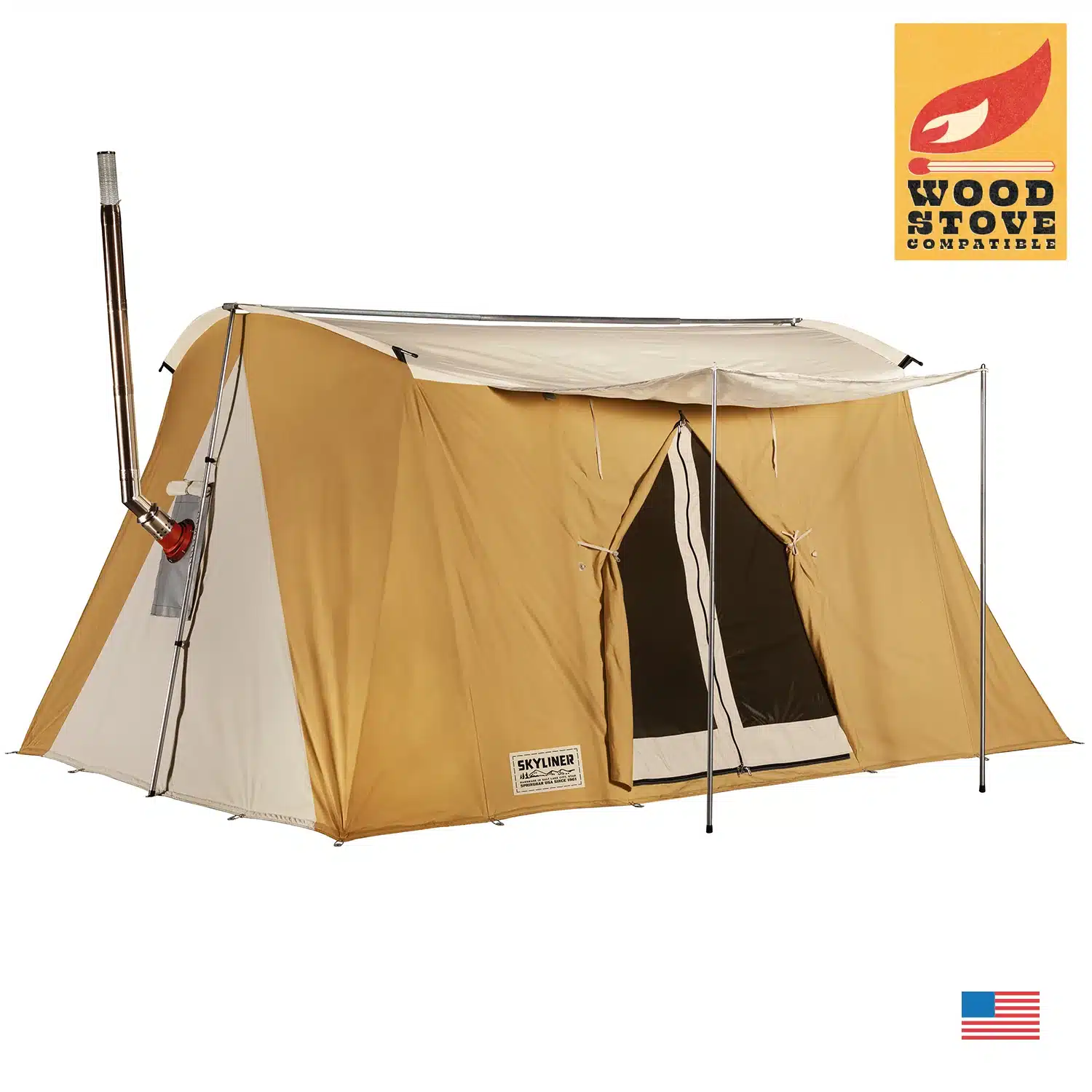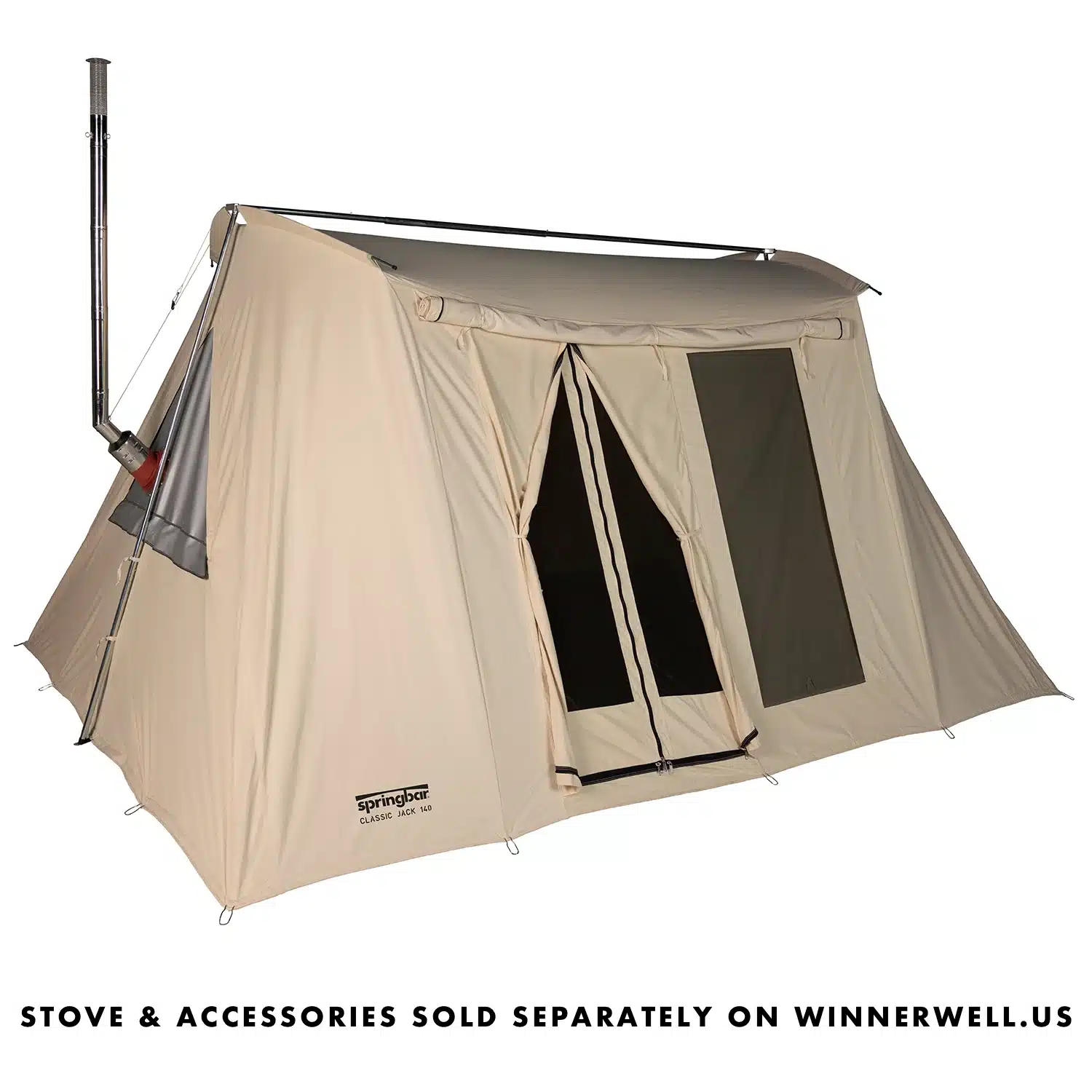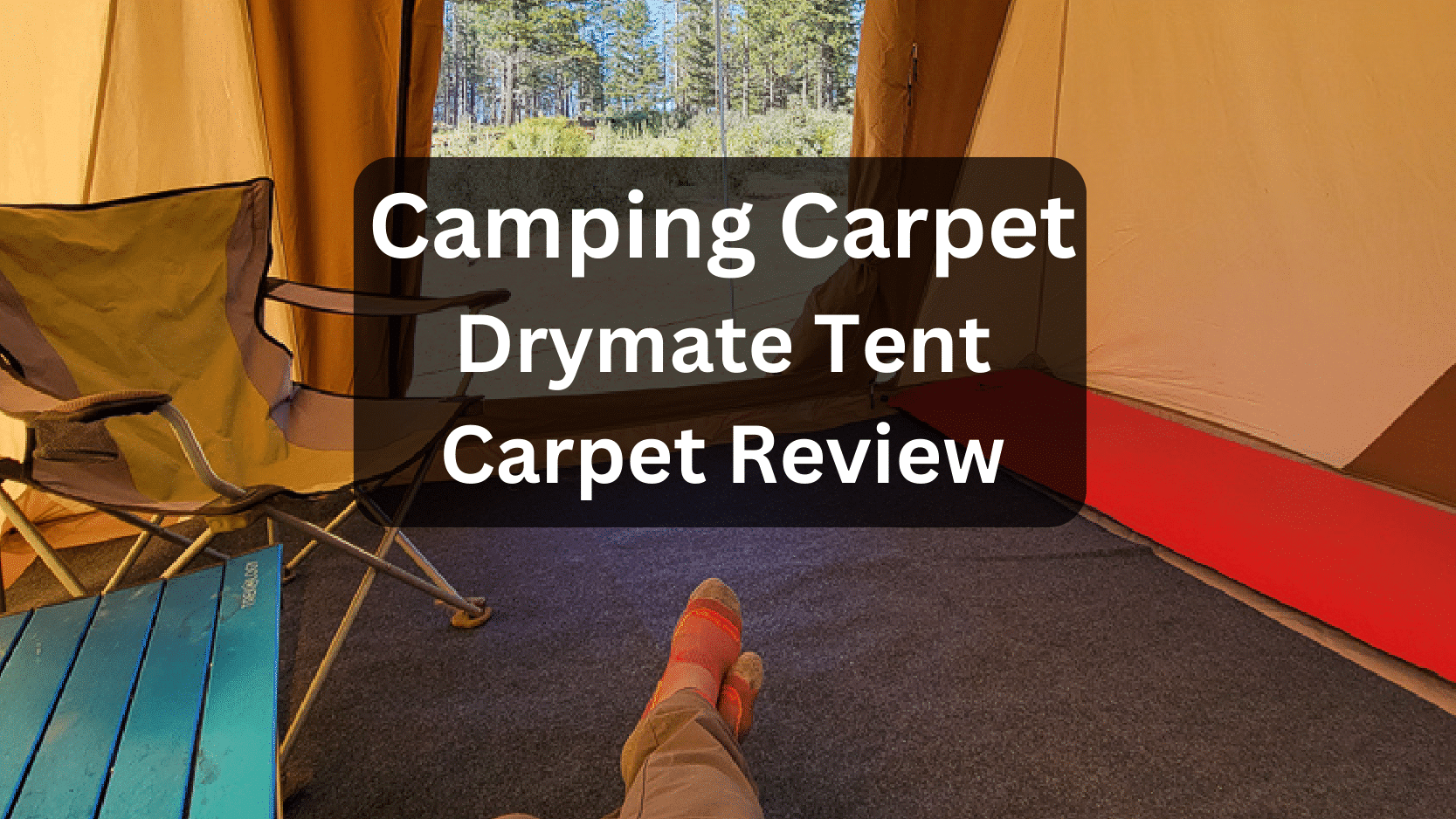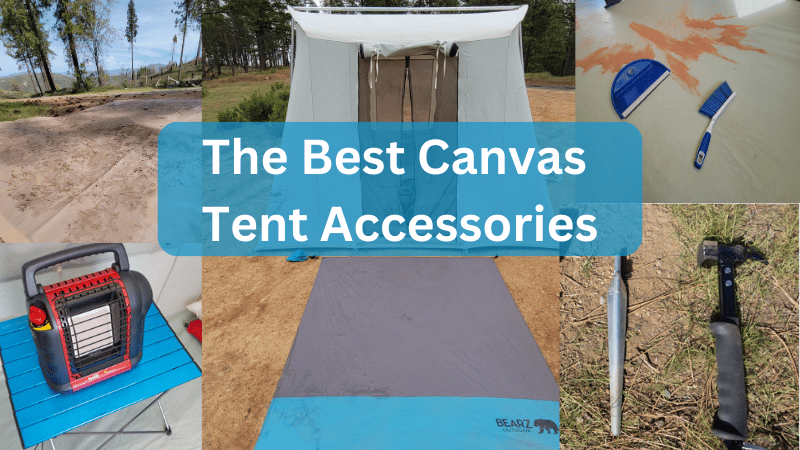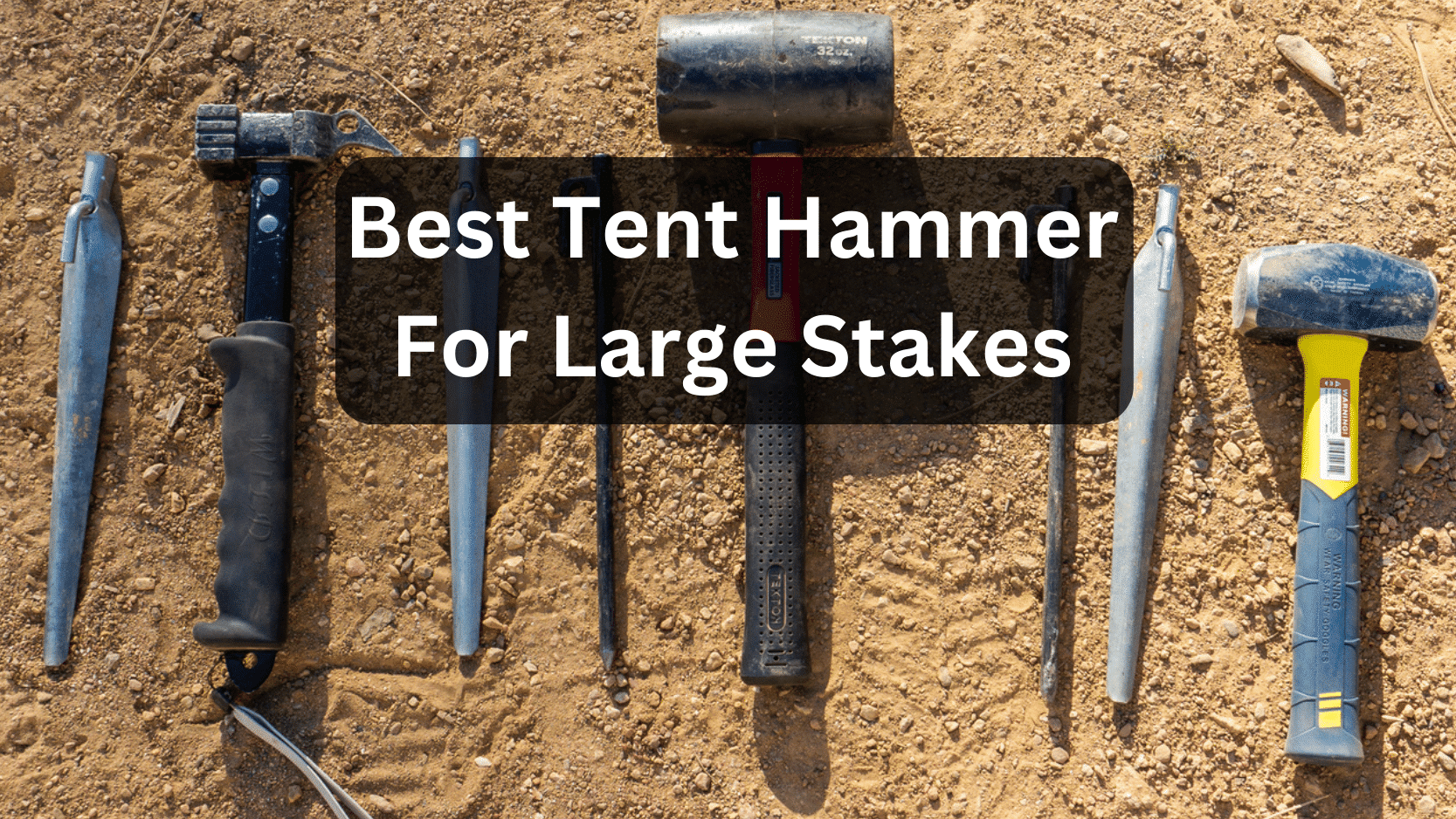There are several solutions for heating a canvas tent in the winter or during the shoulder seasons.
Whether you’re heating a Kodiak Canvas Cabin Tent, a Wall Tent, or a Springbar, each method requires generating heat from some sort of energy source (propane, wood, electricity, or diesel).
You’ll learn which methods are safe, when each method is ideal, and be able to determine the best way for your situation.
Let’s dive in.
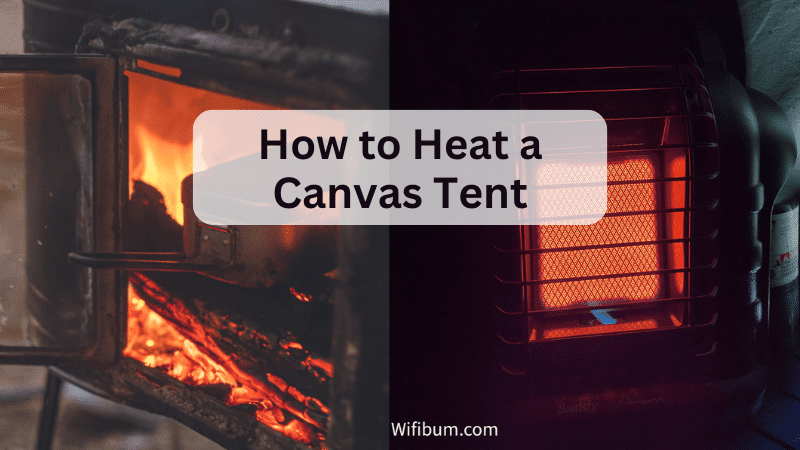
Related: Learn about the best canvas tents or get my discount codes here.
How Do You Heat a Canvas Tent?
There are four primary ways to heat a canvas tent.
- Propane Heaters for Tents
- Wood Burning Stoves
- Electric Heaters for Tents (not recommended)
- Diesel Heaters
Each of these methods has its own set of pros and cons that we’ll review. If you’re wondering how to heat your tent without electricity, 3 of these methods will solve that issue!
A word of caution: I would not recommend any of these methods for nylon tents or small tents. In addition, most canvas tent brands will NOT recommend these unless the tent is specifically designed and/or treated properly. These methods for canvas tents requires caution and more importantly, common sense. I, and my business, accept no responsibility for harm or damage related to these ideas. Please consult with your tent manufacturer for before proceeding with any of these options.
1. Heating Your Tent with a Propane Heater
You can use a propane heater like Mr. Buddy Heater to warm your canvas tent. I’ve used it in my Springbar and Kodiak Canvas Tentss.
Here’s me using a Mr. Buddy Heater in my Springbar. (#affiliate link, if you end up buying one, please use it, it takes a lot of work to make original content).
There’s no surprise that Mr. Buddy Heater came in as number 1 on this list.


It’s the system I’ve used not only for heating my canvas tent, but it’s also a favorite in an ice shanty while ice fishing in the midwest!
My guess is you might already have one, but if you don’t, get it now. You’ll be a hero to your friends and family on any cold-weather trip.
It will last about 6 hours on low and 3 hours on high. It has built-in safety features and has been battle tested for years by hundreds of thousands of people.
The 3 Best Portable Heaters for Tents
All three of my recommendations are Mr. Heater Buddies. The company has been around for decades and is probably one of the most reviewed and used outdoor products ever.
There are some knock-offs on Amazon, but I wouldn’t trust them and they aren’t even cheaper in many cases. There are reviews of the knock-offs catching on fire and other malfunctions, so why risk it?
Here’s a quick look at the 3 primary propane heating options:
- The Classic Mr. Buddy Heater
- Tried and Tested
- 4,000-9,000BTU
- I've had mine for years! Great for 10x10 and smaller.
- Perfect for getting those hands and feet warm
- Might be a bit too small for 10x10 and bigger tents
- Up to 4,000BTU
- The Big Brother
- 4,000-18,000BTU
- Can use dual tanks
- Bulky
- I earn a commission if you click these link and make a purchase at no additional cost to you.
Also, I suggest getting a small table like this to put it on so you don’t risk damaging the vinyl or other materials of the tent.
This table is not only great for inside the tent, but also great for next to your chair around a campfire.
Mr. Buddy Heater Carbon Monoxide – Is it an Issue?
Mr. Heater Buddy is the most popular propane heater on the market. There have been many pseudo experiments done on the internet to determine any carbon monoxide issues and there is little to no evidence that it is unsafe.
However, I love life and I’m not smart enough to know for sure, so I still use this battery-operated carbon monoxide detector for Mr. Heater Buddy if I’m having it on for long periods of time. In addition, I crack the closest vent to where I’m sleeping. Probably not necessary, but it helps me sleep at night without worrying.
The carbon monoxide detector I use for the very, very small chance anything goes wrong. I'm not even sure if it's possible to get carbon monoxide poisoning in a canvas tent, especially if you leave a vent open, but it provides some ease of mind and good to have around the house, too.
Does Mr. Buddy Heater Give Off Condensation?
Yes, propane-based heaters produce condensation as part of the burning process. This article is about heating a canvas tent, and canvas tents are breathable compared to try and using this in a more secure enclosure, so it hasn’t been noticeable to me.
However, this makes it NOT the best option for drying gear, especially compared to options like a wood-burning stove that give off dry heat.
Propane is still the quickest and easiest way to warm up your area out of the options available.
When to Use a Propane-Based Heater for Tent
Mr. Buddy Heater is a great option during shoulder seasons. In the U.S., that’s typically around March and April and then October and November depending on where you live.
It’s great when temperatures are hitting the high 20s or low 30s at night and you just need that quick blast of heat before bed or in the morning to change and get ready for the day.
It’s not the best solution for spending several nights in the dead of winter while you’re combatting below 0 temps. You’ll be going through propane bottles left and right and barely staying warm.
I can raise the temperature in my Kodiak flex-bow canvas tent (read my review) from 40 to 60 in about 5 minutes of running Mr. Buddy Heater. It’s perfect to turn on when you wake up and get ready for bed.
If you’re planning more than a few nights in below 20ish-degree Fahrenheit weather, I’d recommend the next option.
2. Heating A Tent with Wood Burning Stoves (Hot Tent)
Canvas tents with wood-burning stoves are a great way to warm up a tent. If you do any significant amount of time camping in the winter, you’ll want this over any of the other choices.
Springbar and SnowTrekker make great wood-burning canvas tents.
It’s a popular way to not only stay warm but thrive while winter camping.
In addition, you can convert some canvas tents to wood burning on your own. It’s an involved process for casual campers and involves sewing and attention to detail, but it can be done.
However, I’d recommend buying one that’s professionally made for that purpose.
A new (2022) hot tent by Springbar, made in the U.S.
The Classic Jack 140 hot tent. One of the OGs.
For the amount of comfort and warmth a wood-burning stove brings, they are surprisingly compact.
When to Use a Wood Burning Stove Canvas Tent?
Wood-burning stoves are best used when you’re on an extended trip, a long weekend, or more.
They are a favorite of hunters. Not just for cold fall weather, but they perform well in damp environments to help dry gear all night.
Wood-burning stoves give off dry heat (vs propane) which helps keep your gear and tent walls dry.
Getting a wood-burning stove tent can be intimidating because of the additional steps and caution required.
Another consideration is vehicle size. While using a canvas tent is doable for many vehicles, the additional stove, wood, and tent size may be a bit much for cars and even smaller SUVs.
Wood Burning Stove Pre-Burn: Curing a Tent Stove
It is best practice to do a pre-burn in your wood stove prior to using it inside your tent for the first time.
Paint and other chemical debris need to be burned off and you don’t want to breathe that in or have it smell up your tent.
It will also make all your hunting or hiking clothes stink and make for an unpleasant trip.
How Long to Pre-Burn a Stove?
The burn length of a stove depends on the manufacturer. It could be from 2 to 6 hours, but keep burning it if it smells. Stop, well, when the smell stops.
3. Electric Heater to Heat Your Tent
Electric heaters require a power source to heat your tent. Using one is only applicable if you’re at a paid campground with electricity, and even then it seems like a bad idea.
When thinking of an electric heater, I think of those space heaters we’d use under our desks in my office building that didn’t heat very well.
In my past corporate life, they eventually banned them due to fire hazards.
In addition, you’d probably have to route an extension cord to your tent, creating a tripping hazard and a hazard for someone kicking the cord and moving the heater too close to a tent wall or tipping it.
As a result, I’m not going to actually recommend this as an option, I just wanted to address it since I know it’s a common thought to use one.
A great option for a garage, but not for a tent.
Instead, a similar option would be adding electric heat pads or an electric blanket to your sleeping gear. Then you could run your electric blanket from inside the tent with a portable power station.
4. Heating Your Tent with a Diesel Air Heater
Diesel heaters are becoming more and more popular for heating tents, camper vans, and other overlanding vehicles.
What makes them unique is that all the combustion takes place outside of your tent, vehicle, or whatever you’re warming.
The warm air gets pumped into your space and is generally safer than other options – this is especially true for small tents where something could get tipped over easier.
This solution is bulky, noisy, and requires a bit of technical knowledge. Probably not ideal for large canvas tent-based trips, but an interesting solution for overlanding.
You also need something like a Jackery to plug it into (it’s meant to be run from a vehicle). It also holds a gallon of diesel fuel, so you’ll need extra fuel to bring on long trips.
Thanks to the Gear Bunker for creating this awesome video. I learned a lot. I probably will never have a use case for a diesel heater, but it’s good to know the other options available!
FAQ: Heating a Canvas Tent
The two best methods for heating a canvas tent are using a Mr. Buddy Heater (get on Amazon)or investing in a wood-burning stove tent. If you’re more on the casual side of things, go with Mr. Buddy Heater. If you’re doing some serious winter or long fall hunting or camping, get a wood-burning stove tent.
Is it Safe to Use a Propane Heater in Canvas Tent?
Yes, it is safe to use a propane heater in a canvas tent. However, make sure the propane heater you purchase states it is indoor-safe. Keep the heaters away from walls and be careful moving around while they are on.
Can You Live in a Canvas Tent in Winter?
Yes, if you get a wood-burning stove tent and have access to the required gear, it is possible to live in a canvas tent during the winter.
Do Canvas Tents Stay Warm?
No, canvas tents do not stay warm without heating them. Canvas tents are not insulated and lose heat to the ground and air.
Is there such a thing as a Tent Heater?
There are no products I am aware of that are marketed specifically to tents besides wood-burning stove tents. Mr. Buddy Heater (get on Amazon) is the most popular heater that gets associated with tents. However, it and other propane-based heaters have many use cases outside of camping (such as ice fishing, heating a garage in the winter while you’re in there, etc).
I’ll continue to add to the FAQs as I see other questions pop up!
Thanks for hanging out on Wifibum!
Continued Reading: View a list of all my canvas tent-related articles.
